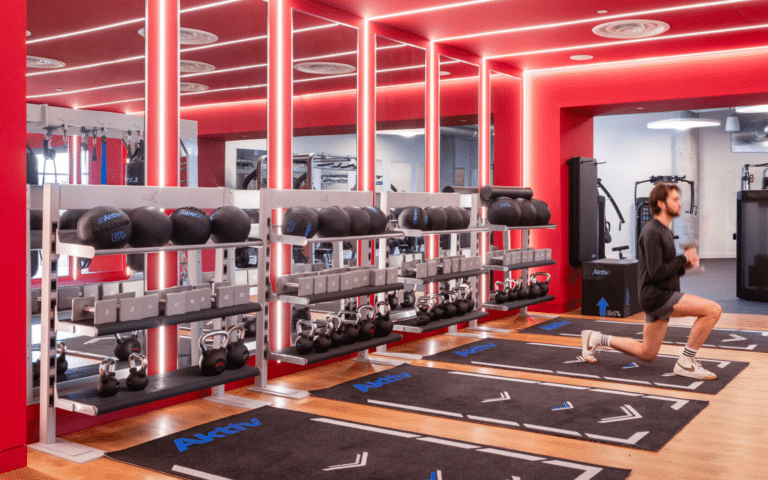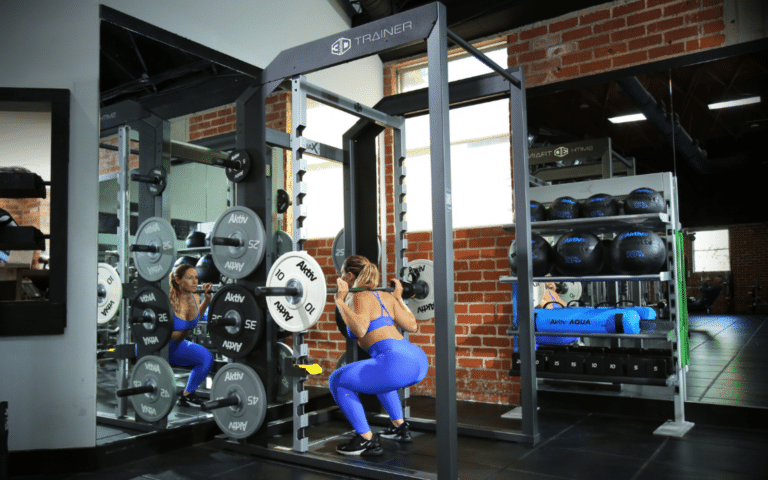People are looking for ways to connect with others, now more than ever. A strong sense of community is not just a means to learn and thrive in life, but a system we rely on for physical and mental well-being. Outdoor activity and sports can help people connect with the communities they live in and with one another. Creating outdoor spaces for residents, employees, students, and health club members where they can gather and share in exercise, conversation, and enjoy the company of friends and neighbors is paramount to creating a healthy community.
Health Benefits of Social Support
Social support means having various types of emotional and logistical support from others. This extends to financial help, guidance, and habit development. The source of that social support may differ depending on one’s stage of life. Younger people gain support from parents and family (Ozbay et al., 2007) while older adults can gain a sense of purpose simply by identifying with a local sports team. Individuals who exercise with groups, have workout partners, or hire fitness professionals may experience more success because of the accountability from others. A like-minded fitness community may be the key to success for some individuals.
There is a large body of scholarly research that indicates having social support is associated with better health outcomes. University of Vermont researcher Mail Reblin and University of Utah Professor Bert Uchino (2008) reviewed the current literature at the time and found that subjects who perceived that they had social support were less likely to suffer from heart disease or issues with blood pressure. They also concluded that being a provider of support, or having value to others, provided positive outcomes on mortality rates.
Outdoor Spaces that Promote Community
Developing the right space in your office, your community, your apartment building, or even your fitness facility will only serve to promote healthy socialization among your community members. We live in a world that spends a lot of time indoors, but some of the best forms of exercise and ways to connect are beyond four walls. The opportunity to spend time in nature can help people live healthier lives and find balance.
For example, some experts suggest that a well-managed outdoor area with trees or views of “greenery” are very inviting for individuals and can promote pro-social behaviors. If you’re designing an outdoor gym, for example, an open-space functional training area will appeal to more individuals and promote conversation and camaraderie. If an outdoor fitness area is well designed, it can also be a place that allows families to get exercise and play together, so everyone gains the benefits of socialization and movement.
A recent study showed that pairs of individuals who exercised together outside with a view of a green field had more conversations and a higher rate of compliance with their exercise routine than did pairs who performed the same workouts indoors (Rogerson, et al., 2016). Combine these social benefits with the mere fact that fresh air, plants, and vitamin D from sunlight are all beneficial to an individual’s overall health and an outdoor gym becomes a no-brainer. Bowler, et al. (2010) concluded that exposure to natural outdoor environments may lead to better overall well-being in individuals.
It Takes a Village
Your community is only as healthy as the individuals in it. So, to ensure the best opportunities for social support and exercise:
- Choose an outdoor location that makes access and chance encounters more likely.
- Design outdoor exercise areas with ample opportunity for individuals to connect with each other.
- Consider aesthetic options like greenery and natural views.
- Consider a design that appeals to all ages, so families can enjoy it together.
Aktiv Solutions can help design a welcoming outdoor fitness space for all ages to enjoy. Contact us today.
Reblin M, Uchino BN. Social and emotional support and its implication for health. Curr Opin Psychiatry. 2008 Mar;21(2):201-5. doi: 10.1097/YCO.0b013e3282f3ad89. PMID: 18332671; PMCID: PMC2729718.
Ozbay F, Johnson DC, Dimoulas E, Morgan CA, Charney D, Southwick S. Social support and resilience to stress: from neurobiology to clinical practice. Psychiatry (Edgmont). 2007 May;4(5):35-40. PMID: 20806028; PMCID: PMC2921311.
Rogerson, Mike & Gladwell, Valerie & Gallagher, Daniel & Barton, Jo. (2016). Influences of Green Outdoors versus Indoors Environmental Settings on Psychological and Social Outcomes of Controlled Exercise. International Journal of Environmental Research and Public Health. 13. 363. 10.3390/ijerph13040363.
Bowler DE, Buyung-Ali LM, Knight TM, Pullin AS. A systematic review of evidence for the added benefits to health of exposure to natural environments. BMC Public Health. 2010 Aug 4;10:456. doi: 10.1186/1471-2458-10-456. PMID: 20684754; PMCID: PMC2924288.






